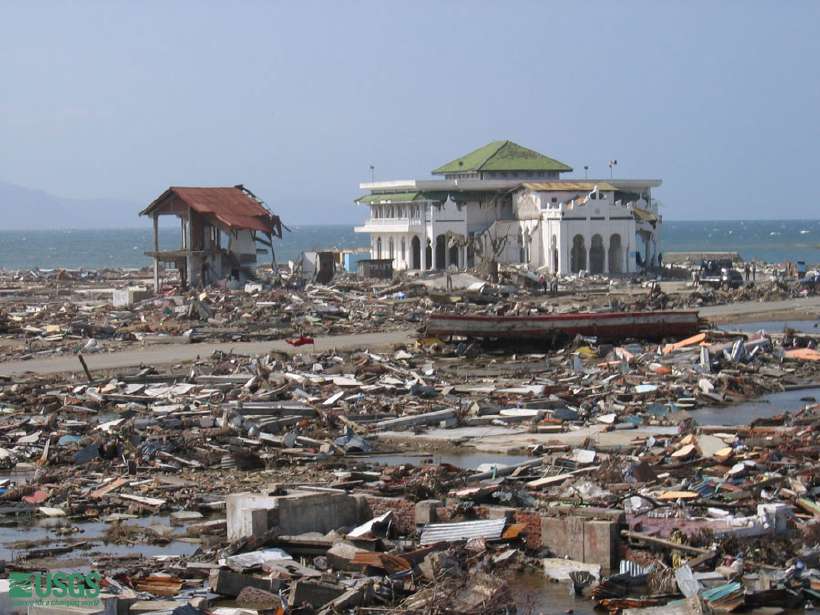What Happens After an Earthquake?
Home / Science for Kids / 5Ws & H For Kids / What Happens After an Earthquake?
People often wonder whether an earthquake can drastically change the topography of a region. A few tremors and some buildings that collapse does not mean that the shape of the earth has changed, does it? However, earthquakes can and do change the topography of the region.
![An earthquake raised Rhodes island. The line of erosion (on the rock to the left) shows the sea level before the earthquake. The rise is uneven in different parts of the island, usually several meters. [Ввласенко / CC BY-SA]Ввласенко / CC BY-SA (https://creativecommons.org/licenses/by-sa/3.0)](/media/an-earthquake-raised-rhodes-island-greece_huaed277ebcb370c3ffe9002dd9d06a100_374914_820x0_resize_q60_box.jpg)
Our earth is made of many layers just like an onion. We can divide it into four main layers: the inner or solid core, the outer or liquid core, mantle, and crust. The inner core is composed mostly of iron and is extremely hot. This heat causes the outer core to remain in a liquid or molten form.
Most of the earth’s mass is in the mantle. But if pressure were to be applied on this layer, it deforms slowly. The crust is the thinnest layer and is rocky. It is also the coldest layer relatively. Because it is cold, the layer is also brittle and fractures easily during an earthquake.
The crust is formed of huge rocky plates that are constantly moving at a speed of 10 centimetres per year. These are known as plate tectonics and they carry the continents or the ocean floor or sometimes both.
![What Happens After an Earthquake? [Illustration by Anup Singh]](/media/5wh-123_1_hu58ca1ffb23d76ee4f3b4802555b1a0b5_8571_320x0_resize_q60_box.gif)
While small quakes occur at depths of less than 80 kilometres from the earth’s surface, other major earthquakes occur at plate boundaries where the earth’s crust is being subducted (when a plate rides over another plate) into the earth’s mantle. These occur as deep as 750 kilometres below the surface.
Most earthquakes take place along the boundary between the plates. Heat currents propel the plates and this movement causes the plates to grind and collide against each other.
Since this is not a smooth process but is accompanied by friction and heat, tearing and shearing, the strain releases energy causing a fracture against the weak portions of the crust. This energy travels in waves along the surface of the earth causing what we term an earthquake.
The earths’ crust below the ocean is quite fragile. The heat currents that propel the plates are also thought to suck down sections of the undersea crust. This produces huge trenches on oceans thousands of feet deep. The Mariana’s Trench in the Pacific Ocean is a result of undersea tremors.
When the currents die away, the material forming the bottom of the trench rises, as it is lighter and sometimes unexpectedly forms mountain ranges or new islands to surface.
An undersea earthquake can also cause flash floods or trigger a tsunami. A tsunami is an enormous sea wave measuring over 80 feet that travels at speeds of 500 kilometres per hour. If it does crash on land, it can cause devastating damage.

On land surface too, earthquakes can change the terrain unexpectedly. The Himalayan mountain range was formed as a direct result of two continental plates colliding against each other. The great Tokyo earthquake in 1923, caused by the twisting of a section in Sagami Bay, lifted the Bay about three metres while shifting the Izu peninsula four metres to the west!
The aftermath of an earthquake can result in large fissures on the grounds, creating gorges and valleys where none existed before. Earthquake vibrations can cause sandy soils to liquefy. Such a process would make the ground sink suddenly, in a process called fluidising.
In a mountainous terrain, landslides may occur and sometimes, small hills disappear or are levelled to the ground.
A major earthquake is also followed by smaller tremors like an echo. These are called aftershocks. Aftershocks are smaller tremors that occur in the same fault area where the original quake took place. As a general rule, aftershocks represent minor readjustments along the portion of a fault that slipped up at the time of the main shock.
It is often asked if an earthquake in Toronto or Greece can trigger an earthquake in India. The answer is no, when you consider the distances involved. The earth’s rocky crust is not rigid enough to transfer such stress efficiently over thousands of miles.
760 words |
7 minutes
Readability:
Grade 7 (12-13 year old children)
Based on Flesch–Kincaid readability scores
Filed under: 5ws and h
Tags: #earthquake, #oceans, #undersea, #tremors
You may also be interested in these:
What is a Tsunami?
Why do Earthquakes Occur?
How are Earthquakes Recorded?
Fungus Threatens Chinese Warriors
Jacques-Yves Cousteau